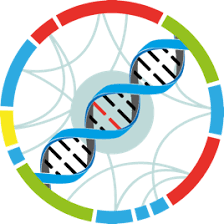Study : Comparative transcriptome analyses of citrus root responses to Candidatus liberibacter asiaticus infection
Identification
Name
Comparative transcriptome analyses of citrus root responses to Candidatus liberibacter asiaticus infection
Identifier
dXJuOkVWQS9zdHVkeS9QUkpOQTI4MDI1NQ==
Description
Root samples of ‘Sanhu’ red tangerine trees infected with and without Candidatus Liberibacter asiaticus (CLas) were collected at 50 days post inoculation and subjected to RNA-sequencingto profile the differentially expressed genes (DEGs) . Results showed that a total of 3956 genes were differentially regulated by HLB-infection. Comparison between our results and those of the previously reported showed that known HLB-modulated biological pathways including cell-wall modification, protease-involved protein degradation, carbohydrate metabolism, hormone synthesis and signaling, transcription activities, and stress responses were similarly regulated by HLB infection but different or root-specific changes did exist. The root unique changes included the down-regulation in genes of ubiquitin-dependent protein degradation pathway, secondary metabolisms, cytochrome P450, UDP-glucosyl transferase and pentatricopeptide repeat containing protein genes. Notably, nutrient absorption was impaired by HLB-infection as the expression of the genes involved in Fe, Zn, N and P adsorption and transportation were significantly changed. HLB-infection induced some cellular defense responses but simultaneously reduced the biosynthesis of the three major classes of secondary metabolites, many of which are known to have anti-pathogen activities. Genes involved in callose deposition were up-regulated whereas those involved in callose degradation were also up-regulated, indicating that the sieve tube elements in roots were hanging on the balance of life and death at this stage. In addition, signs of carbohydrate starvation were already eminent in roots at this stage. Other interesting genes and pathways that were changed by HLB-infection were also discussed based on our findings. Overall design: Two-year-old seedlings of ‘Sanhu’ red tangerine were grafted with buds from CLas-infected or CLas-free ‘Gonggan’ mandarin trees. Mature leaves and roots were collected from the CLas-inoculated and the control trees every ten days to detect for CLas by PCR. DNA used for PCR was extracted with the use of the Plant DNA isolation Kit (Trans, Beijing, China) according to manufacturer’s instructions. Primers used for CLas detection were the same A2/J5. The fibrous roots of 3 CLas-positive and 3 control CLas-free trees were individually collected at 50 dpi (days post inoculation) when the HLB-inoculated trees became CLas-positive in both leaves and roots yet showed no visible chlorosis and other HLB symptoms. This should have allowed us not to miss too many early responsive genes but at the same time ensured that the trees were infected as expected. Total RNA was extracted from each sample using RNeasy plant mini kit (Qiagen, Valencia, CA) and further purified using the RQ1 Rnase Free Dnase Kit (Promega, Madison, USA). RNA quality and quantity were assessed by gel-electrophoresis and by absorbance at OD260/OD280, respectively. Aliquot RNA samples were stored at -80 ℃. For RNA-seq analysis, RNA samples from the three trees were mixed in equal amount and used for cDNA library construction following the Illumina mRNA-sequencing sample preparation protocol (Illumina, San Diego, CA). The 90-bp raw paired end reads were generated by Illumina HiSeqTM 2000. Please note that the features (in the processed data, e.g.,clementine0.9_035093m.g) represent the gene IDs in the Citrus clementina genome at ftp://ftp.jgi-psf.org/pub/JGI_data/phytozome/v9.0/Cclementina/. However, the database has been updated (http://genome.jgi.doe.gov/pages/dynamicOrganismDownload.jsf?organism=PhytozomeV10) with new gene IDs, thus the gene IDs used for this study are not trackable anymore. Therefore, the gene annotation files downloadeded from the previous genome database (v0.9) and used for the data analysis are included in this record.
Data files
Genotype
| Accession number | Name | Taxon |
|---|
